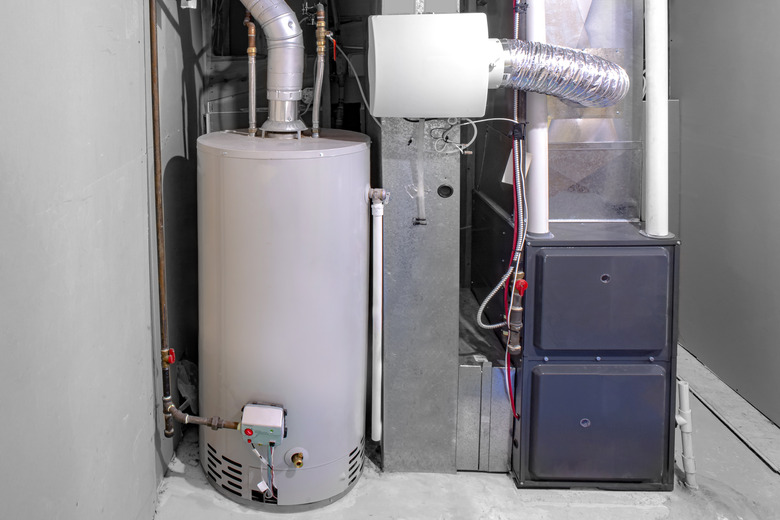How Does A Condensate Pump Work?
We may receive a commission on purchases made from links.
A condensate pump may have the appearance of a cute little toy stuck to the side of your furnace, but it isn't. The job these devices perform is important. They collect and pump out all the condensation that gathers within your HVAC system during heating and air conditioning processes — like miniature sump pumps. Without them, you'll basically have a wet floor problem, and in the hot summer months, that could mean lots of condensation and plenty of wet floor.
Tip
A condensate pump captures condensed liquid from a heating and/or air conditioning system and pumps to disperse it into a drainage system once the liquid level triggers a switch.
What Condensate Pumps Do
What Condensate Pumps Do
In the air conditioning process, when warm, moist air is pulled across the system's cooling coils, the moisture condenses into a drain pan below. In the heating process of a condensing gas furnace, the system doesn't immediately dispel combustion gases through vents but retains the gases to pull heat from them — a process that allows the gases to cool and condense into water before being sent packing.
Condensate pumps are used to collect and disperse the condensate produced by these HVAC units that are located in spaces, such as basements, where the liquid can't be drained by gravity.
How They Do It
How They Do It
Using air conditioning condensation as an example, the operational process of a condensate pump is simple.
As the warm, moist air that needs conditioning passes over the cooling coils, the cooling causes formation of condensation on the coils' surface. This condensate drips into a tray located in the unit's blower unit or air handler and then flows into a drain and down a flexible tube or pipe into the condensate pump's water reservoir that contains a float switch. As more condensation forms, the level of water reaches the top of the reservoir, lifting the float switch which then activates the pump's electric motor.
At this point, the unit begins the process of pumping the collected water up into a drain pipe or tube that's usually flexible plastic tubing. This condensate line normally leads through a wall to the outside of the building or home, but it can lead to a floor drain or utility sink.
Pumps With Two-Stage Switches
Pumps With
Two-Stage Switches
Some condensate pumps fall into the two-stage category. These offer additional backup to prevent accumulated condensation from pouring out onto your floor in the event of pump failure or blocked discharge. If, due to such a problem, the liquid rises beyond the first stage without activating the pump, a second switch is engaged that either triggers an alarm or shuts off the pump.
Condensate Pump Problems
Condensate Pump Problems
If you see water on the floor around your heating and air conditioning system, you'll know there's a problem. It may be the pump itself. Its motor or float mechanism may have worn out over time. Also, debris may have collected on the float and its various components, gumming up the system so the float fails to trigger the motor. It's also possible that the drain hose is clogged. Before replacing the unit or calling a technician, refer to your owner's manual for a list of troubleshooting suggestions.
References
- InspectAPedia: Air Conditioning Condensate Pumps: Types, Location, Piping, Installation
- Mr. Central Heating: What Is a Condensate Pump & Why Do I Need One?
- MSP Plumbing | Heating | Air: Why Is My Gas Furnace Dripping Water? A Minneapolis Tech Explains
- Blair's Air Conditioning & Heating: How To Tell If Your Condensate Pump Is Working
